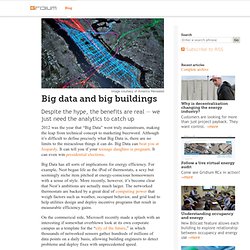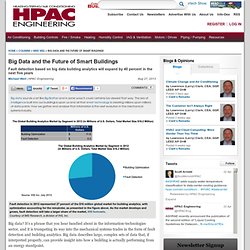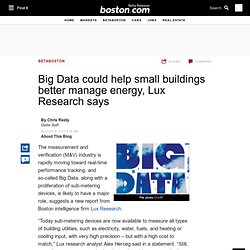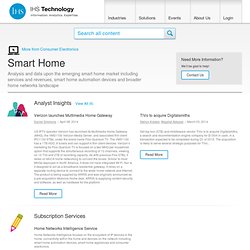

Geoprocessing with Neo4j-Spatial and OSM. Big data and big buildings. 2012 was the year that “Big Data” went truly mainstream, making the leap from technical concept to marketing buzzword.

Although it’s difficult to define precisely what Big Data is, there are no limits to the miraculous things it can do. Big Data can beat you at Jeopardy. It can tell you if your teenage daughter is pregnant. It can even win presidential elections. Big Data has all sorts of implications for energy efficiency. On the commerical side, Microsoft recently made a splash with an interesting if somewhat overblown look at its own corporate campus as a template for the “city of the future,” in which thousands of networked sensors gather hundreds of millions of data points on a daily basis, allowing building engineers to detect problems and deploy fixes with unprecedented speed.
The term Big Data, however, obscures the real story, which is the rise of a data analytics as a critical management tool across a wide spectrum of human endeavors. It’s early days for this stuff. Big Data and the Future of Smart Buildings. Fault detection in 2012 represented 27 percent of the $16 million global market for building analytics, with optimization accounting for the remainder, as presented in the figure above.

As the market develops and grows, fault detection will take a larger share of the market, IHS forecasts. Courtesy of IMS Research, a division of IHS, Inc. Big data? It’s a phrase that you hear bandied about in the information-technologies sector, and it is trumpeting its way into the mechanical systems trades in the form of fault detection and building analytics. Big data describes large, complex sets of data that, if interpreted properly, can provide insight into how a building is actually performing from an energy standpoint. Modern buildings are full of data-collection systems—from building management, which captures temperature and humidity levels, to access control, which collects occupancy statistics, to other measurements too.
What does this mean to building owners and managers? And you can help. Big Data could help small buildings better manage energy, Lux Research says - Innovation. The measurement and verification (M&V) industry is rapidly moving toward real-time performance tracking, and so-called Big Data, along with a proliferation of sub-metering devices, is likely to have a major role, suggests a new report from Boston intelligence firm Lux Research.

“Today sub-metering devices are now available to measure all types of building utilities, such as electricity, water, fuels, and heating or cooling input, with very high precision – but with a high cost to match,” Lux research analyst Alex Herceg said in a statement. “Still, as real-estate managers slowly adopt a data-driven approach, the demand for the devices that can deliver actionable insights will grow.” Herceg is the lead author of a report titled, “Proof in Performance – Improving BEMS (Building Energy Management Systems) through Measurement and Verification.” And Lux Research predicts that so-called Big Data will play a dominant role in auditing the performance of energy-management systems.
IMS Research - The Big Growth Opportunity for Big Data in Smart Buildings. US IPTV operator Verizon has launched its Multimedia Home Gateway (MHG), the VMS1100 Verizon Media Server, and associated thin client IPC1100 STBs, under the brand name Fios Quantum TV.

The VMS1100 has a 1TB HDD, 6 tuners and can support 4 thin client devices. Verizon’s marketing for Fios Quantum TV is focused on a two MHG per household option that supports the simultaneous recording of 12 channels, viewing on 10 TVs and 2TB of recording capacity. As with previous Fios STBs, it relies on MoCA home networking to connect the boxes. Similar to most MHGs deployed in North America, it does not have integrated Wi-Fi. Nor is it designed to act as a broadband residential gateway. Big data, analytics and the Internet of Buildings. Disclaimer: The views presented in this article are personal views of the author and in no way represent those of the company he works for or any industry body he is associated with.

Buildings have always been rich sources of data. Limitations in technology kept the data stored in native or simple aggregated repositories with some basic analytical functions performed on them. High storage costs were an impediment to growth of such data and analytics. Data and analytics remained limited to subject of interest and enquiry because commercial models around data were under developed. This reduced the meaningful use of data. For the past several decades there have been many initiatives to develop fault detection and diagnostics and apply huge volumes of building data for improved predictive maintenance. There are several contributing factors why the adoption of Big Data Analytics has been limited in the buildings industry so far: